ALAN PARADISE May 18, 2023 All Feature Vehicles
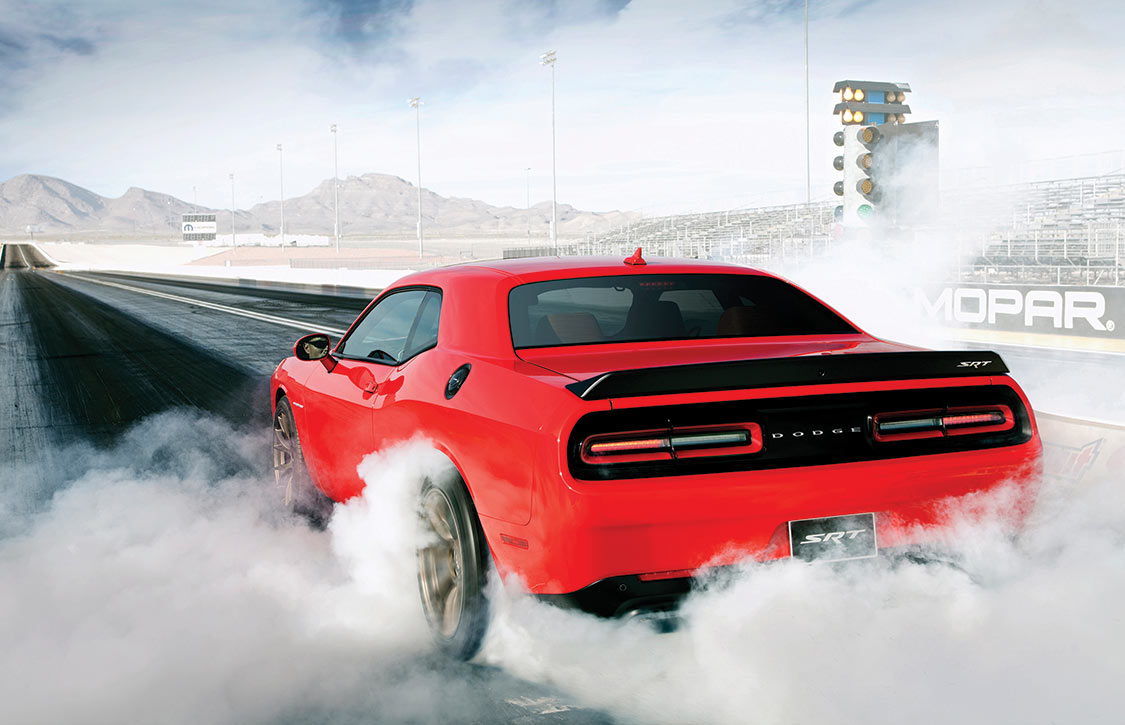
Hell hath no fury like Detroit scorned. Since the late 1970s, U.S. automakers have been fighting a tailspin. When the oil embargo of 1976 sent the global auto market into a massive realignment, buyers’ attitudes shifted from one end of the spectrum to the other. Suddenly the letters “mpg” meant good and the letters “hp” disappeared from factory advertising. Muscle had completely gone out of the factory vernacular as evidenced by a 180-hp Corvette and a Mustang that could barely get out of its own way. Small, boxy econoboxes were in vogue replacing the V-8 in pride of ownership. Responsibility became more important than daring. It was a dark time to be sure. But, it was only the beginning of the fall.
A decade later, America’s Big Three were desperately trying to catch up with European and Japanese marks. During that time, we saw the near collapse of Chrysler, as well as massive bleeding from General Motors and a rash of ill-timed launches from Ford. The fastest model in the Chrysler family at that time was a Shelby-tuned, rebadged Japanese model.

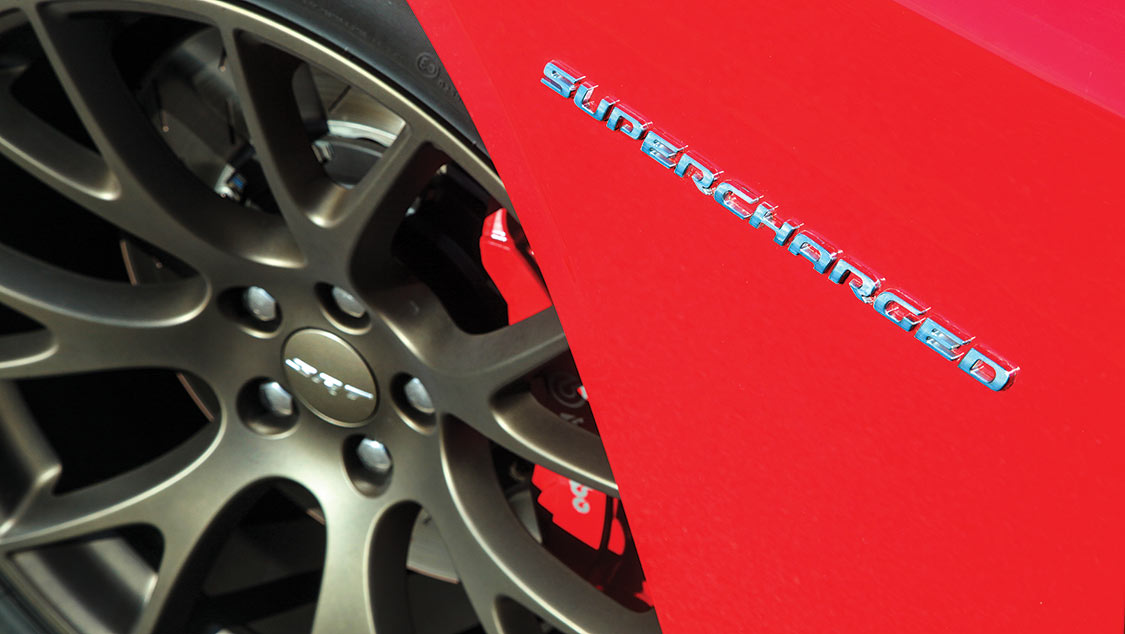
Since the dawn of the new century, American automakers have attempted to rediscover the rich vein of performance. Fueled by consumer demand, horsepower ratings have slowly accelerated. Iconic models of the Glory Days of the Muscle Car were strategically reborn in a factory-backed plan to restore their image to the lofty status of the past.
Now, in the first quarter of 2015, the rhetoric of the muscle car wars of the late 1960s and early 1970s has returned. If evidence of this is required, one only needs to spend a few minutes in the new Dodge Challenger SRT Hellcat.
The Challenger Hellcat does not necessarily provide a love-at-first-sight appeal. In fact, it looks quite mild. At a glance, there is little to indicate the brutality that rests under the skin. The hood is reminiscent of the 1970 ’Cuda AAR, as is the rear deck spoiler. The only true giveaway may be the “Supercharged” badge on each front fender. Aside from that, the more educated will note the massive slotted brake discs and multi-piston calibers. The tire-and-wheel package is special to the model but not unique to the market. Thankfully, Dodge kept the exterior trim subtle, stately and respectful of the Hellcat’s $60,000 entry fee. It also makes the rig something of a street sleeper.
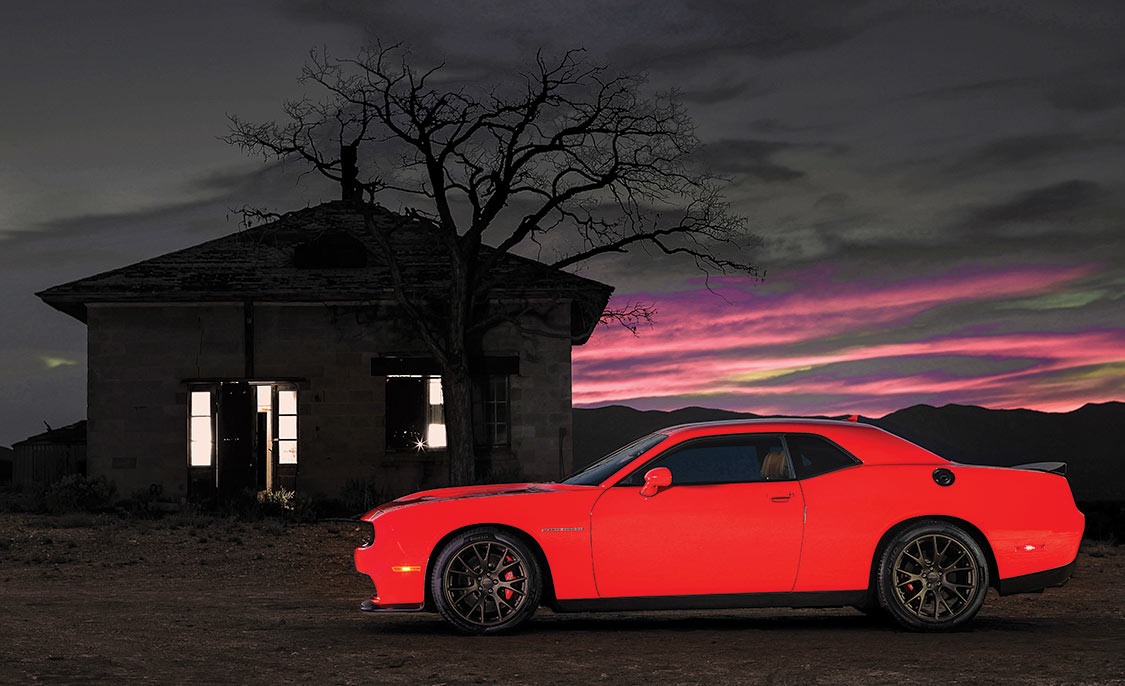
“A lack of soul” is how some vintage muscle car enthusiasts describe these modern-day versions. If that is a legitimate argument, then the devil bought the rights to the old Hemi Challenger and installed it in the Hellcat. Along the way Chrysler added real fit and finish—something the original Challengers sorely lacked. Opening the door provides a sure, tight feel—free from the familiar squeaks and rattles found on the older versions right off the 1970s showroom.
Once inside, this is where the refinements really became noticeable. The race-inspired seats not only looked like glove leather, they fit like a glove as well. This really becomes a factor during aggressive driving. A quick look around reveals perhaps a few too many creature comforts. A large display screen was the first over-the-top feature along with a plethora of knobs and dials, buttons and switches. Make no mistake, every one of them is purpose-built. Perhaps there’s more there than strictly necessary, but it should not go to the extreme such as you find in the Ford Mustang SVT Cobra R.
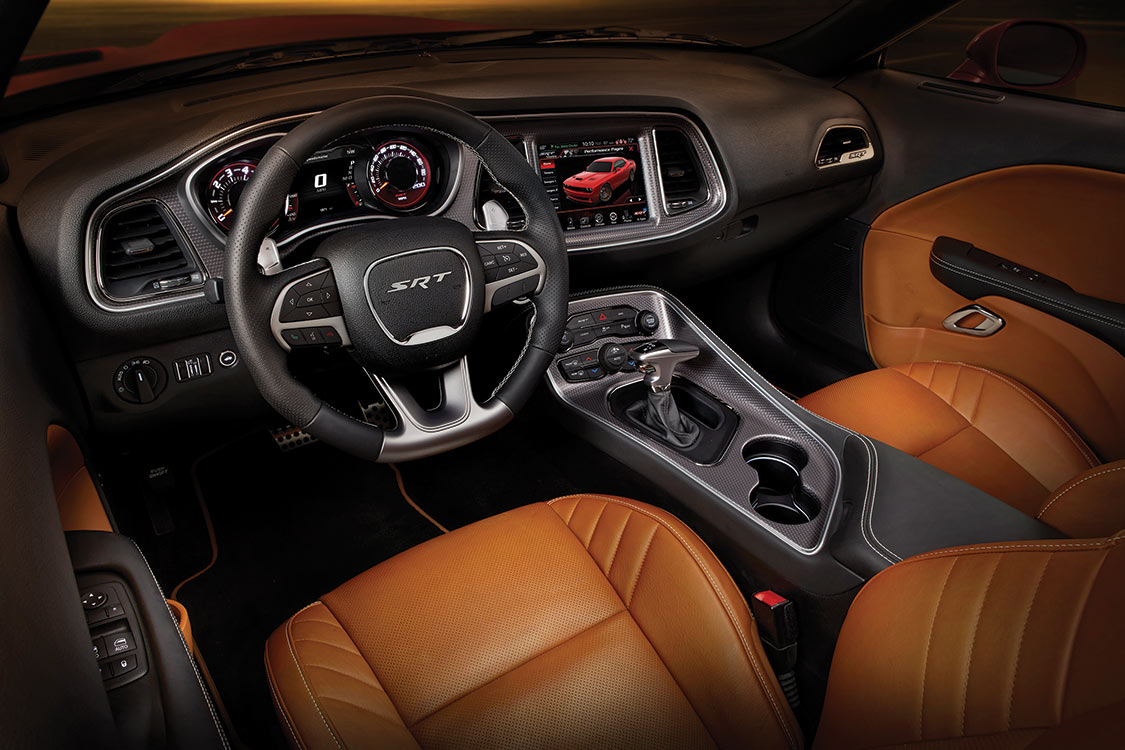
Enough of postponing the inevitable—it was time to stir the beast. If this were a 45-years-ago Challenger, the first instinct would be to pump the accelerator pedal a few times or hit the switch to the electronic fuel pump and wait for the tone to turn to a deep growl. But, this is modern-day muscle—just hit the “Engine Start” button. Instantly and without lag, the 6.2-liter Hemi V-8 fires up, sending a nasty growl out the 2.75-in. free-flowing exhaust system. There is no fighting the urge to rap off a couple of revs to send a message to clear the kids and pets off the neighborhood street.
Before engaging the Hellcat’s fury, be sure the correct key fob is present. Dodge allows for two high-tech performance options that begin with the key fobs—one red and the other black. The red fob alerts the factory supercharged engine to make available all 707 hp, as well as 650 ft.-lb. of torque. Grab the black fob by mistake, and the engine output is limited to a measly 500 hp. “Are you holding red or black” could be an important question for Camaro Z/28 and Mustang Shelby owners to ask prior to getting too mouthy.
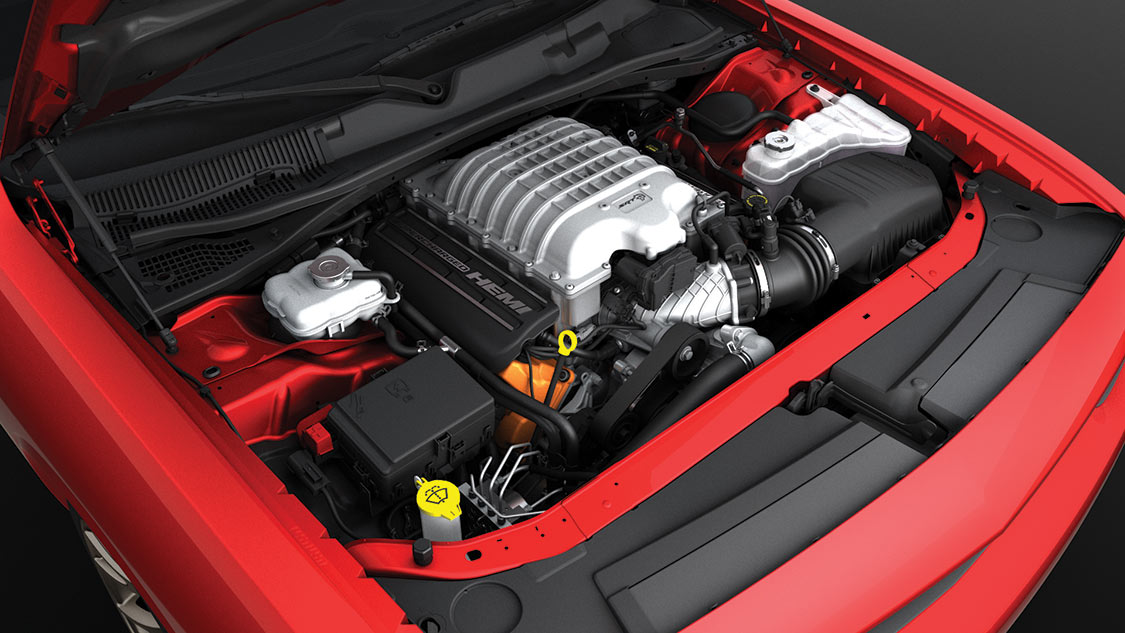
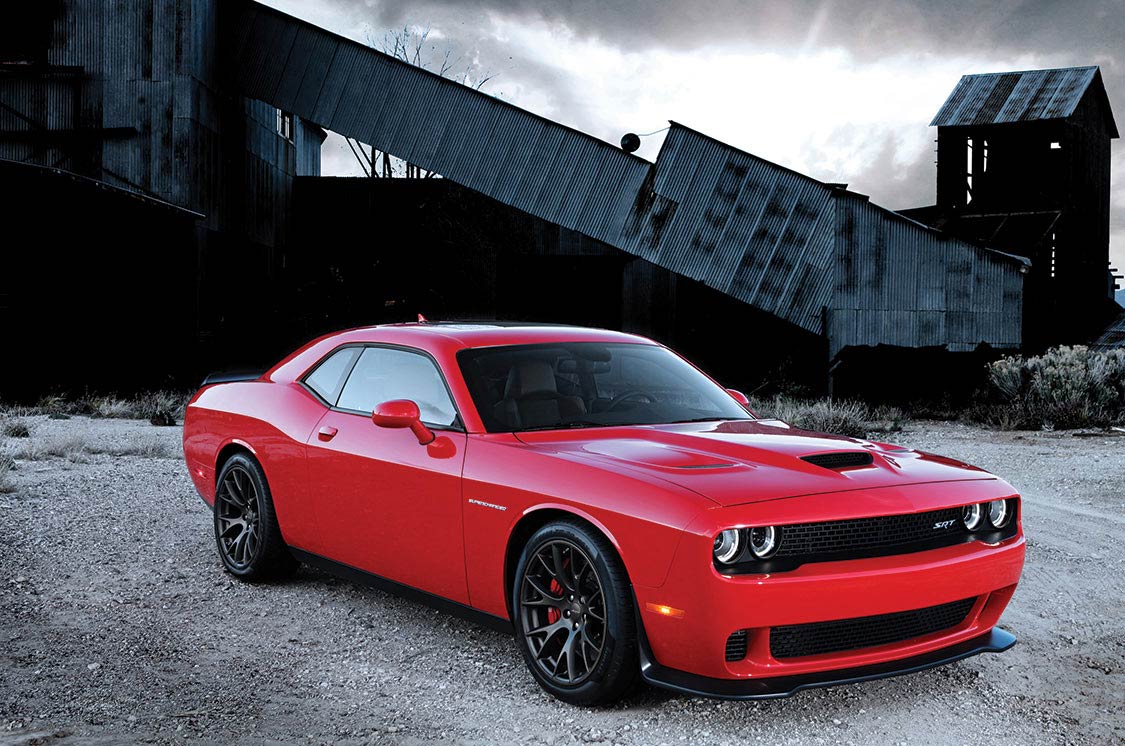
The power surge completely and totally sets the SRT Hellcat apart from its much older Hemi brothers. The powerband was (dare we say) linear in nature. Throttle response was smooth and manageable in day-to-day traffic and provided confident and effortless acceleration to highway speed. But, that’s not the sexy side of this machine. Stabbing the gas produces an instant Stage One air-quality alert. The supercharged engine runs remarkably clean, even at full chat. It’s the tire smoke that will send the EPA into a frenzy, as well as prompt the local fire department into action—and all that is just using the black key fob. The red fob not only unlocks the engine’s full potential, but also lays in a course for the nearest Discount Tire store.
For the tech head in all of us, the Hellcat’s impressive performance capabilities are due to the first factory supercharged Hemi engine Chrysler has ever offered. In the past, when you think of a blown Hemi, visions come to mind of Prudhomme and McEwen battling out the quarter mile with engines prepped by Keith Black and Ed Pink. Okay, so the new supercharged Hemi is a 378-cid instead of the famed 426, but this one runs on pump gas and comes with a factory warranty. Two water-to-air intercoolers aid the fuel-injected supercharger. The engine block is cast iron with cross-bolted main bearing caps. The heads are aluminum. Trick features include sodium-filled exhaust valves and hollow stem intake valves. Lifters are hydraulic with roller tips. To accommodate the forced induction, the compression ratio was lowered from the standard 10.9:1 to 9.5:1.
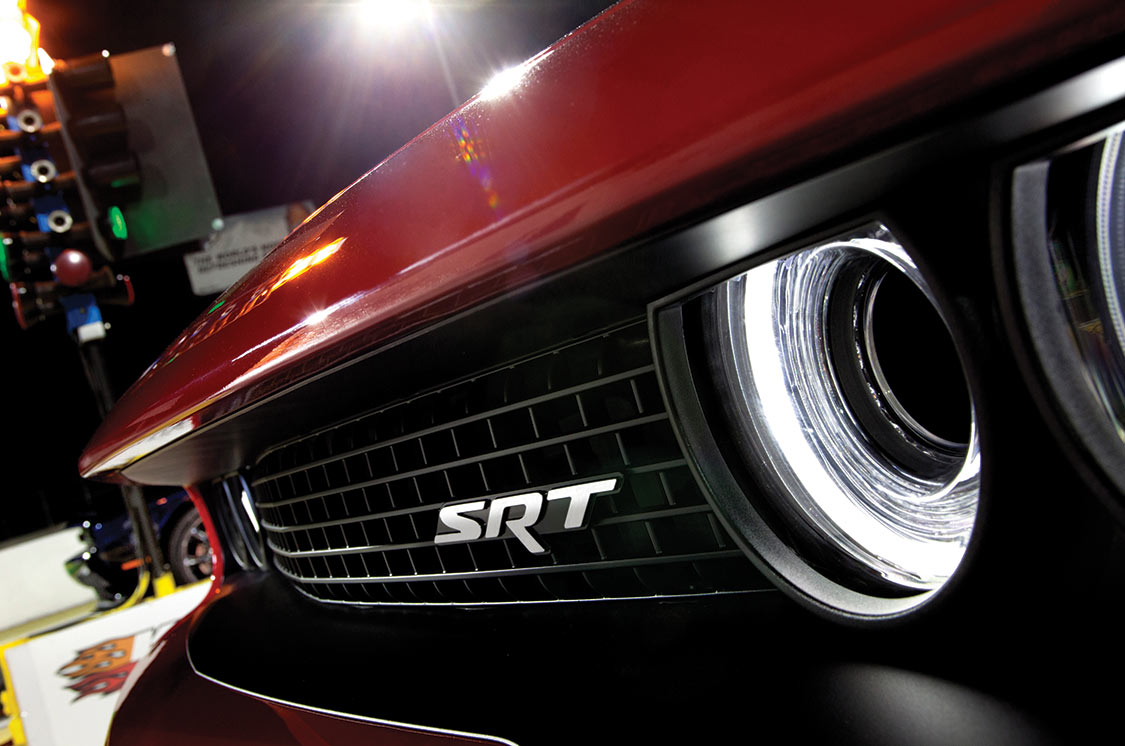
On a tamer note, slalom-style driving was reasonably sure-footed but don’t expect the Hellcat to finesse the turns. This car manhandles the lefts and rights. Once the feathering of power is learned, attacking the corners comes with far more confidence. The progressive rate springs and improved 3-mode shock damping flatten out the car and provide quick transitional response. Yet despite the addition of a 5-link rear suspension with a stiffer anti-sway bar and Bilstein shocks, this is one area where the Hellcat falls a little short of the Mustang Shelby and the Camaro Z/28. The more things change, the more they stay the same: this was also the case in 1970. The saving grace is that if you’re about to drop $60-plus grand on a Hellcat, you’re likely more interested in the “point-and-shoot” aspects of the car.
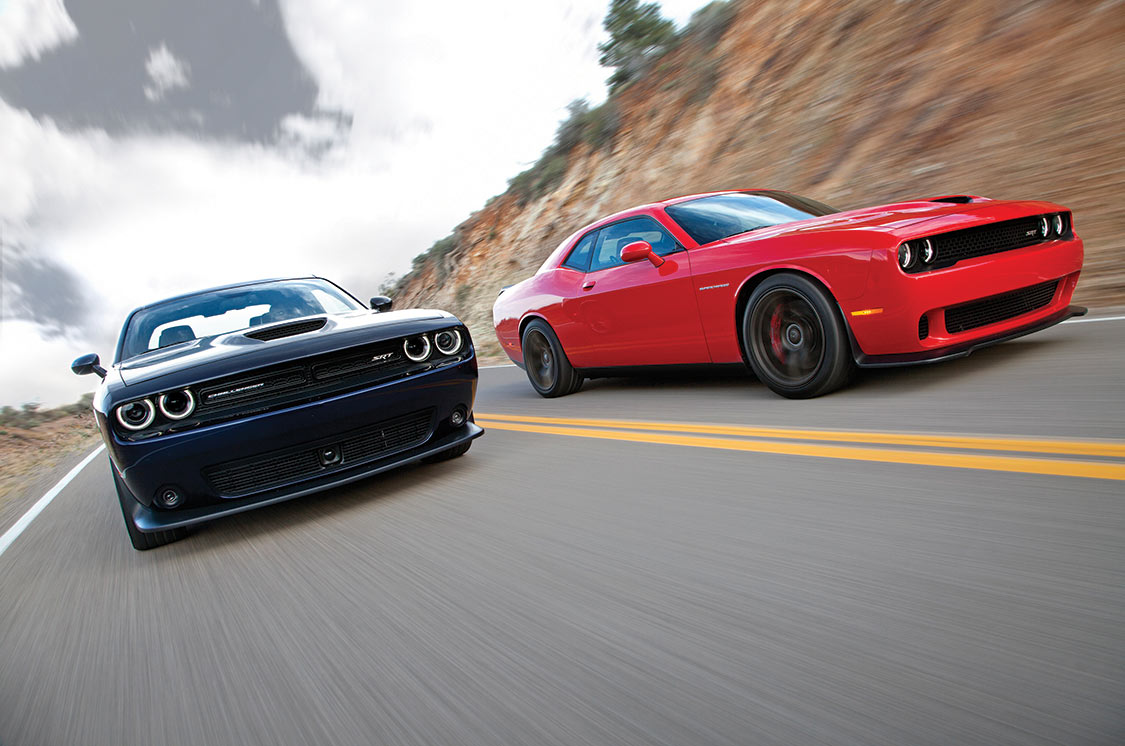
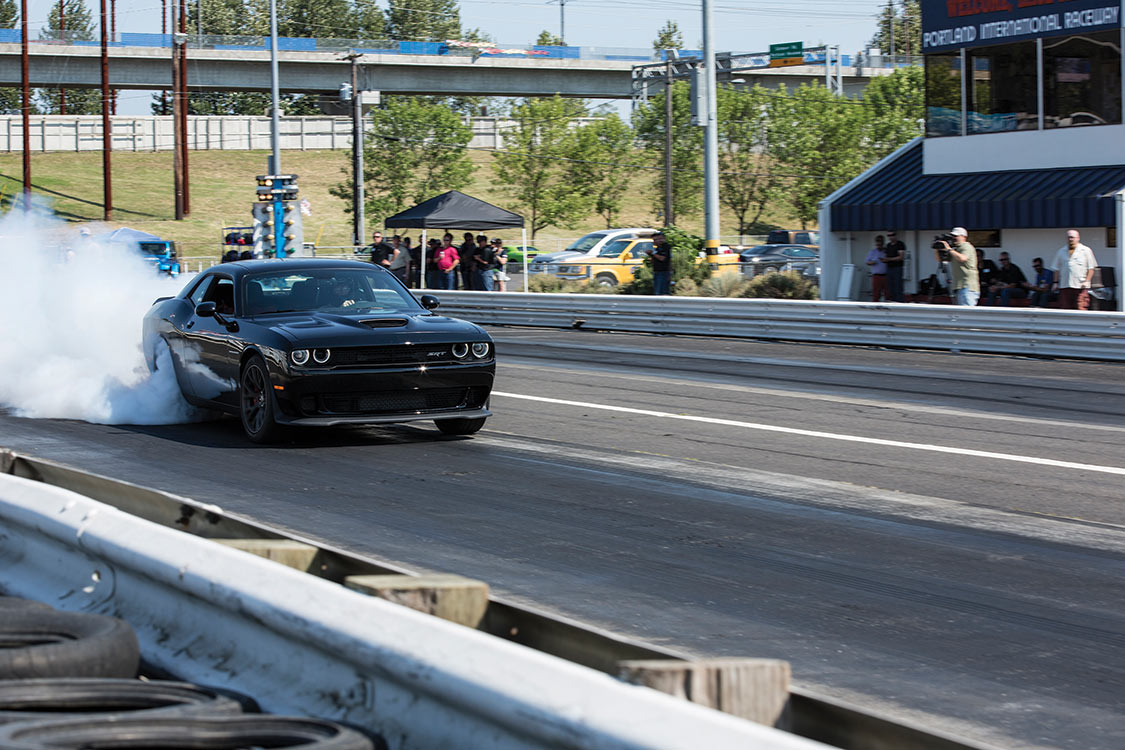
In the modern Muscle Car hierarchy, the Hellcat is at the top of the list. It is quicker than any make or model made since the Beach Boys starting singing about a 409. In fact, it’s not even a close argument. When put side by side with a 1970 Hemi ’Cuda, the car that many consider the pinnacle of the Muscle Car performance class, the Hellcat was a four-car-length victor. Consistent passes of 11.5 sec. at 124 mph (with Pirelli street tires) are easily achieved. Some drivers reported even lower elapsed times bumping up against the magical 10-sec. barrier. That’s amazing for a showroom stock car that comes with a 60,000-mile powertrain warranty.
You can even extend the discussion that this Challenger SRT is the cat that can put the hurt on the European bull and horse show. Not even the most expensive Ferrari, Lamborghini or Porsche can nose out a Hellcat from light-to-light. Cross-town rival Chevrolet found the Dodge Boys’ latest “sinsation” so formidable that they marketed the idea that the Corvette ZO6 is quicker from 0–60 and 0–100. Note, the comparison was not against the Camaro Z/28, but the Corvette ZO6—validating that the Challenger Hellcat belongs in the same performance class as one of the world’s most elite supercars.
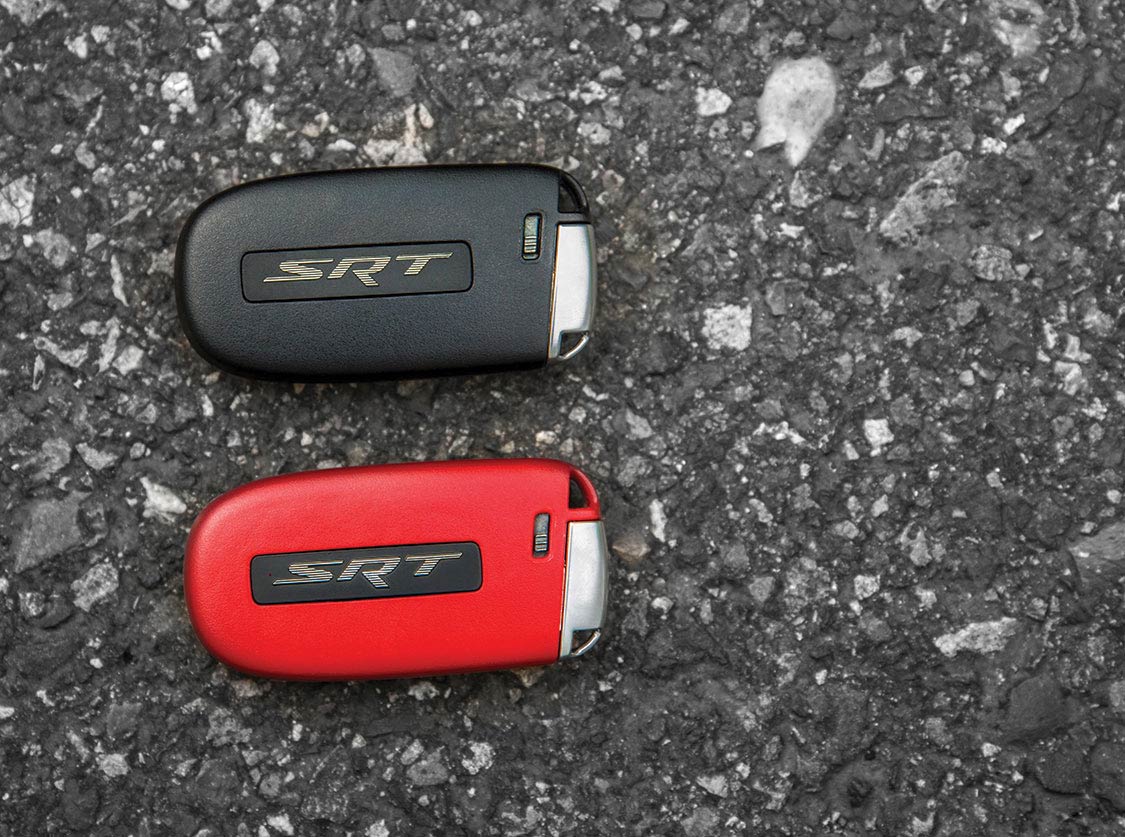
To Dodge: Thanks for listening to our cries. American performance enthusiasts have officially been led out of the cold and dark decades that made us say the dreaded words, “I want a Porsche.” The bar has been set at 707 hp and mid-11-sec. elapsed times. Will Dodge stuff ever more performance into future Hellcat Challengers? Will they create a small-block 426 Hemi much like Chevrolet did with the 427 Corvette? Anything is possible. And that is what makes the new Muscle Car era so exciting.
STAT FACTS |
||
| 1970 Challenger R/T | 2015 SRT Challenger Hellcat | |
| Engine | 426-cid | 6.2-liter (378-cid) |
| Horsepower | 425 | 707 |
| Induction | 2×4 bbl. | Supercharged |
| Transmission | 4-speed/Torque Flight auto | 6-speed/8HP90 auto |
| Wheels | 15 x 7 | 20 x 9.5 |
| Tires | E60 x 15 | 275 x 20 |
| MSRP | $4900 | $65,000 |
| Current value | $130,000 | $65,000 |